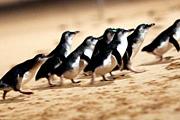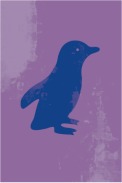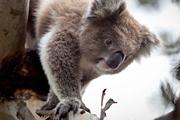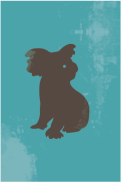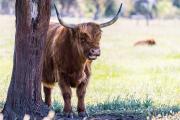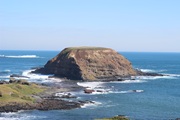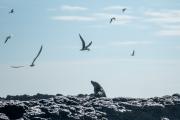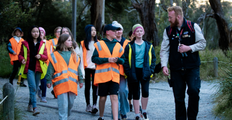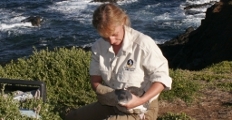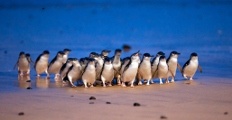|
Take care when driving on Phillip Island especially at dawn, dusk and at night when wildlife is most active. To report injured wildlife, call Wildlife Victoria on (03) 8400 7300. |
Discover the world-renowned wetlands on the north shore of Phillip Island. The mangroves and mudflats of Rhyll Inlet are a significant site for the wading birds that fly thousands of kilometres to feed during the summer months. Rhyll Inlet forms part of Western Port, which is listed as a wetland of international importance under the Ramsar Convention. This intergovernmental treaty supports national action and international cooperation for the conservation and wise use of wetlands and their resources.
Boardwalks of varying lengths loop through the mangroves, saltmarsh and mudflats, and walkers are rewarded by the presence of spoonbills, oystercatchers, herons, egrets, and cormorants. Climb the Conservation Hill Observation Tower for panoramic views of the wetlands and surrounding woodland reserves.
The wetlands of Rhyll Inlet are a vital link between the land and the sea. The mangroves provide critical habitat for numerous plants and animals, including marine snails, bivalves, and adult and juvenile fish, while the extensive mudflats provide a wealth of food for waterbirds to feast on when the tide rolls out.
Address: Mcilwraith Rd, Rhyll VIC 3923
Virtual tour
You can now take a virtual tour of Rhyll Inlet thanks to Port Phillip and Westernport CMA.
Walking and cycling trails from Conservation Hill car park
Lookout walk
500m return, 20 min, easy/moderate.
Enjoy expansive views over the inlet and Western Port.
Mangrove boardwalk
1.2km return, 45 min, easy.
Wander through coastal woodland and paperbark forest to the intertidal mudflats and mangrove boardwalks of Rhyll Inlet. Look for notched shorecrabs and listen for the snapping shrimps that live in the mud.
Conservation Hill carpark to McIlwraith Road
4.5km return, 2h, easy/moderate.
An extended walk-through coastal woodland, mangrove boardwalks and farmland with views across Rhyll Inlet. Continue for a further 2km to the historic village of Rhyll.
Download the map HERE

It’s all about the birds
Shorebird conservation
The beaches, mangroves and mudflats of Rhyll inlet support significant populations of shorebirds. The shorebirds are easily disturbed by human activities. Please remain on designated pathways to ensure these birds do not abandon the site.
Resident or visitor
The abundant feeding grounds of the inlet attract shorebirds from near and far. Many birds call the inlet home all year round and can be seen within the inlet itself. A host of migratory shorebirds travel enormous distances along the East Asian Australasia Flyway from as far afield as Siberia and Alaska to spend the southern summer at Observation Point, the single most important site for medium to large shorebirds in Western Port.

Resident shorebirds Migratory shorebirds
Royal Spoonbill (image above) Eastern Curlew (image below)
Pied Oystercatcher Bar-tailed Godwit
Great Egret Whimbrel
Pacific Gull Red Knot
White-bellied Sea Eagle Curlew Sandpiper

Best viewing
At low tide, the birds spread out to feed on shrimps, crabs, worms, and molluscs that live in the mud and seagrass. As feeding areas are covered by the approaching high tide, the birds roost on Ghetto Rocks and Observation Point. This provides the best viewing opportunity from several vantage points along the walking trail. Some of the birds you might see are listed as near threatened or vulnerable.






